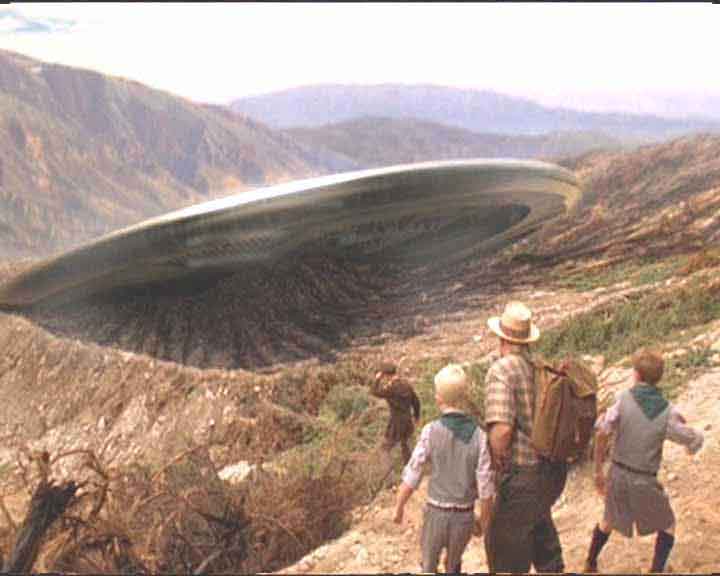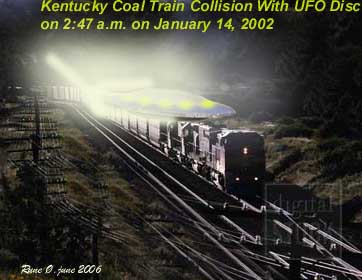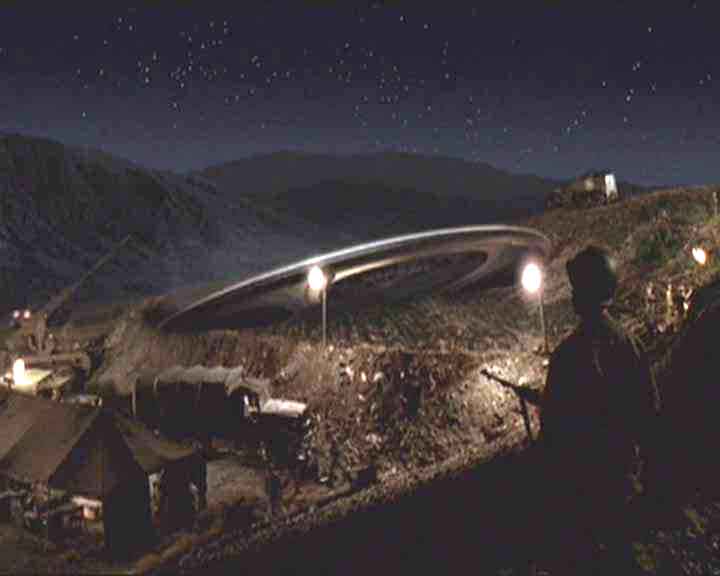-
- Just before dawn on July 16, 1945, scientists
detonated the world's first atomic bomb at Trinity Site, some 20
miles southeast of San Antonio, N.M. Three weeks later, on
August 6 and 9, the United States brought World War II to a
dramatic end by using the bomb to destroy the Japanese cities of
Hiroshima and Nagasaki.
-
- On August 6, the world first learned that the
Trinity event, which had frightened San Antonioans witless, was
not "an ammunition magazine containing high explosives and
pyrotechnics" as the military had reported. It was an
atomic bomb, "death, the destroyer of worlds," in the
words of project physicist J. Robert Oppenheimer.
-
- It was in this crucible of suspicion and
disinterest bred by familiarity that a small contingent of the
U.S. Army passed almost unnoticed through San Antonio in
mid-to-late August, 1945 on a secret assignment.
-
- Little or nothing has been printed about the
mission, shrouded in the "hush-hush" atmosphere of the
time. But the military detail apparently came from White Sands
Proving Grounds to the east where the bomb was exploded. It was
a recovery operation destined for the mesquite and greasewood
desert west of Old US-85, at what is now Milepost 139, the San
Antonio exit of Interstate 25.
-
- Over the course of several days, soldiers in
Army fatigues loaded the shattered remains of a flying apparatus
onto a huge flatbed truck and hauled it away.
-
- That such an operation took place between
about Aug. 20 and Aug. 25, 1945, there is no doubt, insist two
former San Antonioans, Remigio Baca and Jose Padilla,
eyewitnesses to the event.
-
- Padilla, then age 9, and Baca, 7, secretly
watched much of the soldiers' recovery work from a nearby ridge.
Their keen interest stemmed from being the first to reach the
crash site.
-
- What they saw was a long, wide gash in the
earth, with a manufactured object lying cockeyed and partially
buried at the end of it, surrounding by a large field of debris.
They believed then, and believe today, that the object was
occupied by distinctly non-human life forms which were alive and
moving about on their arrival minutes after the crash.
-
- They reported their findings to Jose's father,
Faustino Padilla, on whose ranch the craft had crashed. Shortly
thereafter, Faustino received a military visitor asking for
permission to remove it.
-
- During their school years, Jose and Remegio,
best friends, would sometimes whisper about the events of that
August, which occurred before any of the other mysterious UFO
incidents in New Mexico, but they didn't talk to others about it
on the advice of their parents and a state policeman friend.
-
- The significance of what they saw, however,
grew in their eyes over time as tales of UFOs and flying saucers
multiplied across the country, especially in a ban across
central New Mexico.
-
- Among the most prominent was Socorro police
officer Lonnie Zamora's April 24, 1964 on-duty report of a
"manned" UFO just south of Socorro, less than 10 miles
north of the heretofore unnoticed 1945 Padilla Ranch crash.
-
- Jose and Remigio were long gone from the area
by the time UFOs and flying saucers became news, and although
both kept up with Socorro County events, they lost contact and
never discussed the emerging phenomenon with each other.
-
- Reme moved to Tacoma, Wash., while still in
high school and Jose to Rowland Heights, Calif. Then, two years
ago, after more than four decades apart, they met by chance on
the Internet while tracking their ancestry. It was then their
interest in the most intriguing event of their childhood was
rekindled.
-
- During one of the conversations, Remegio and
Jose decided to tell their story to veteran news reporter Ben
Moffett, a classmate at San Antonio Grade School who they knew
shared their understanding of the culture and ambience of San
Antonio in the forties and fifties, and who was familiar with
the terrain, place names, and people. This is their story as
told to Moffett.
-
-
- By Ben Moffett
- Mountain Mail
- benmoffett@att.net
-
-
-
- SAN ANTONIO, N.M. -- The pungent but pleasing
aroma of greasewood was in the air as Jose Padilla, age 9, and
friend, Remigio Baca, 7, set out on horseback one August morning
in 1945 to find a cow that had wandered off to calf.
-
- The scent of the greasewood, more often called
creosote bush today, caught their attention as they moved away
from this tiny settlement on their horses, Bolé and Dusty. The
creosote scent is evident only when it is moist, and its
presence on the wind meant rain somewhere nearby.
-
- So, as they worked the draws on the Padilla
Ranch, they were mindful of flash flooding which might occur in
Walnut Creek, or side arroyos, if there were a major
thunderstorm upstream. Gully-washers are not uncommon in late
summer in the northern stretches of the Chihuahuan Desert of
central New Mexico, especially along the foothills of the
Magdalena Mountains looming to the west.
- Despite minor perils associated with being
away from adults, it was a routine outing for Jose and Reme. It
was not odd to see youngsters roam far afield doing chores
during the war years. "I could ride before I could walk,"
said Jose in a recent interview. "We were expected to do
our share of the work. Hunting down a cow for my dad wasn't a
bad job, even in the August heat."
-
- At length, they moved into terrain that seemed
too rough for the horses hooves, and Jose decided to tether them,
minus bridles, allowing them to graze. He had spotted a mesquite
thicket, a likely place for a wayward cow to give birth, and
they set off across a field of jagged rocks and cholla cactus to
take a look. As they moved along, grumbling about the thorns,
the building thunderheads decided to let go. They took refuge
under a ledge above the floodplain, protected somewhat from the
lightning strikes that suddenly peppered the area.
-
- The storm quickly passed and as they again
moved out, another brilliant light, accompanying by a crunching
sound shook the ground around them. It was not at all like
thunder. Another experiment at White Sands? No, it seemed too
close. "We thought it came from the next canyon, adjacent
to Walnut Creek, and as we moved in that direction, we hear a
cow in a clump of mesquites," said Reme. Sure enough, it
was the Padilla cow, licking a white face calf.
-
- A quick check revealed the calf to be healthy
and nursing, and the boys decided to reward themselves with a
small lunch Jose had sacked, a tortilla each, washed down with a
few swigs from a canteen, and an apple.
-
- As they munched, Jose noticed smoke coming
from a draw adjacent to Walnut Creek, a main tributary from the
mountains to the Rio Grande.
-
- Ignoring their task at hand, the two boys
headed toward it, and what they saw as they topped a rise "stopped
us dead in our tracks," Reme remembers. "There was a
gouge in the earth as long as a football field, and a circular
object at the end of it." It was "barely
visible," he said, through a field of smoke. "It was
the color of the old pot my mother was always trying to shine up,
a dull metallic color."
-
-
-
- They moved closer and found the heat from the
wreckage and burning greasewood to be intense. "You could
feel it through the soles of your shoes," said Reme.
"It was still humid from the rain, stifling, and it was
hard to get close."
-
- They retreated briefly to talk things over,
cool off, sip from the canteen and collect their nerve, worried
there might be casualties in the wreckage.
-
- Then they headed back toward the site. That's
when things really got eerie. Waiting for the heat to diminish,
they began examining the remnants at the periphery of a huge
litter field. Reme picked up a piece of thin, shiny material
that he says reminded him of "the tin foil in the old olive
green Phillip Morris cigarette packs."
-
- "It was folded up and lodged underneath a
rock, apparently pinned there during the collision," said
Reme. "When I freed it, it unfolded all by itself. I
refolded it, and it spread itself out again." Reme put it
in his pocket.
-
- Finally they were able to work their way to
within yards of the wreckage, fearing the worst and not quite
ready for it. "I had my hand over my face, peeking through
my fingers," Reme recalled. "Jose, being older, seemed
to be able to handle it better."
-
- As they approached they saw, thought they saw,
yes, definitely DID see movement in the main part of the craft.
-
- "Strange looking creatures were moving
around inside," said Reme. "They looked under stress.
They moved fast, as if they were able to will themselves from
one position to another in an instant. They were shadowy and
expressionless, but definitely living beings."
-
- Reme wanted no part of whoever, whatever was
inside. "Jose wasn't afraid of much, but I told him we
should get out of there. I remember we felt concern for the
creatures. They seemed like us-children, not dangerous. But we
were scared and exhausted. Besides it was getting late."
-
- The boys backtracked, ignoring the cow and
calf. It was a little after dusk when they climbed on their
horses, and dark when they reached the Padilla home.
-
- Faustino Padilla asked about the cow, and got
a quick report. "And we found something else," Jose
said, and the story poured out, quickly and almost incoherently.
"It's kind of hard to explain, but it was long and round,
and there was a big gouge in the dirt and there were these
hombrecitos (little guys)."
-
- Their tale unfolded as Jose's father listened
patiently. "They were running back and forth, looking
desperate. They were like children. They didn't have hair,"
Jose said
-
- "We'll check it out in a day or two,"
Faustino said, unalarmed and apparently not worried in the least
about survivors or medical emergencies. "It must be
something the military lost and we shouldn't disturb it. Leave
your horse here, Reme, and Jose and I will drive you home, since
it's so late."
-
- Two days later at about noon, state policeman
Eddie Apodaca, a family friend who had been summons by Faustino,
arrived at the Padilla home. Jose and Reme directed Apodoca and
Jose's dad toward the crash site in two vehicles, a pick-up and
a state police car. When they could drive no further, they
parked and hiked to the hillside where the boys had initially
spotted the wreckage.
-
- As they topped the ridge, they noted the cow
and calf had moved on, probably headed for home pasture, then
they walked the short distance to the overlook. For a second
time, Jose and Reme are dumbfounded.
-
- The wreckage was nowhere to be seen.
-
- "What could have happened to it?"
Reme asked.
-
- "Somebody must have taken it," Jose
responded defensively.
-
- Apodoca and Faustino stared intently but
unaccusingly at Jose and Reme, trying to understand. They headed
down the canyon nonetheless, and suddenly, "as if by magic,"
in Reme's words, the object reappeared.
-
- "From the top of the hill, it blended
into the surroundings," Reme explained recently. "The
sun was at a different angle, and the object had dirt and debris
over it," which he speculated may have been put there by
someone after the crash.
-
- Apodoca and Faustino led the way to the craft,
then climbed inside while Jose and Reme were ordered to stay a
short distance away. "I can't see the hombrecitos,"
Reme offered.
-
- "No," replies Jose. "But look
at these marks on the ground, like when you drag a rake over
it."
- "The huge field of litter had been
cleaned up," Reme recalled. "Who did it, and when, I
have no idea. Was it the military? Using a helicopter? Or the
occupants?"
-
- The main body of the craft, however, remained
in place with odd pieces dangling everywhere.
 -
- Now it was time for the adults to lecture Reme
and Jose, Reme remembers. "Listen carefully. Don't tell
anyone about this," Reme quoted Faustino as saying. "Reme,
your dad just started working for the government. He doesn't
need to know anything about it. It might cause him trouble."
-
- Faustino also worked for the government at
Bosque del Apache National Wildlife Refuge and the ranch itself
was on leased federal land. Faustino was a patriotic man and
honest to a fault in his dealing with the federal government,
according to Jose.
-
- "The government calls them weather
balloons," the state policeman chipped in. "I'm here
to help Faustino work out the recovery with the government.
They'll want this thing back."
-
- "But this isn't like the weather balloons
we've seen before," said Reme. "They were little,
almost like a kite."
-
- "You're right, Reme. Este es un monstruso,
que no Eddie?" Faustino said.
-
- "Yeah, it's big for sure," the state
policeman acknowledged.
-
- "And the hombrecitos?" Reme
persisted.
-
- "Maybe you just thought you saw them,"
said Faustino. "Or maybe somebody took them, or they just
took off."
-
- Then they headed home. The cow and calf also
grazed their way back in a day or two.
-
- Next week: The story continues with the
military's removal of the wreckage, while Jose and Reme,
equipped with binoculars, spy on their every move, including the
soldiers slipping off to the Owl Bar for a little diversion.
-
- Jose and Reme also look back at the incident
from the perspective of time. Was the object that required a
flatbed truck and an "L" extension a weather balloon,
or an alien craft from space or from another dimension?
-
- The two men, now in their mid to late 60s,
still have a piece of the craft and know where other parts were
buried by the military.
-
- Reme also speculates about how the 1945
incident fits in with the many sightings that were later
reported in a ban across central New Mexico and elsewhere,
giving rise to a UFO and "flying saucer" phenomenon
that is still debated today.
|


